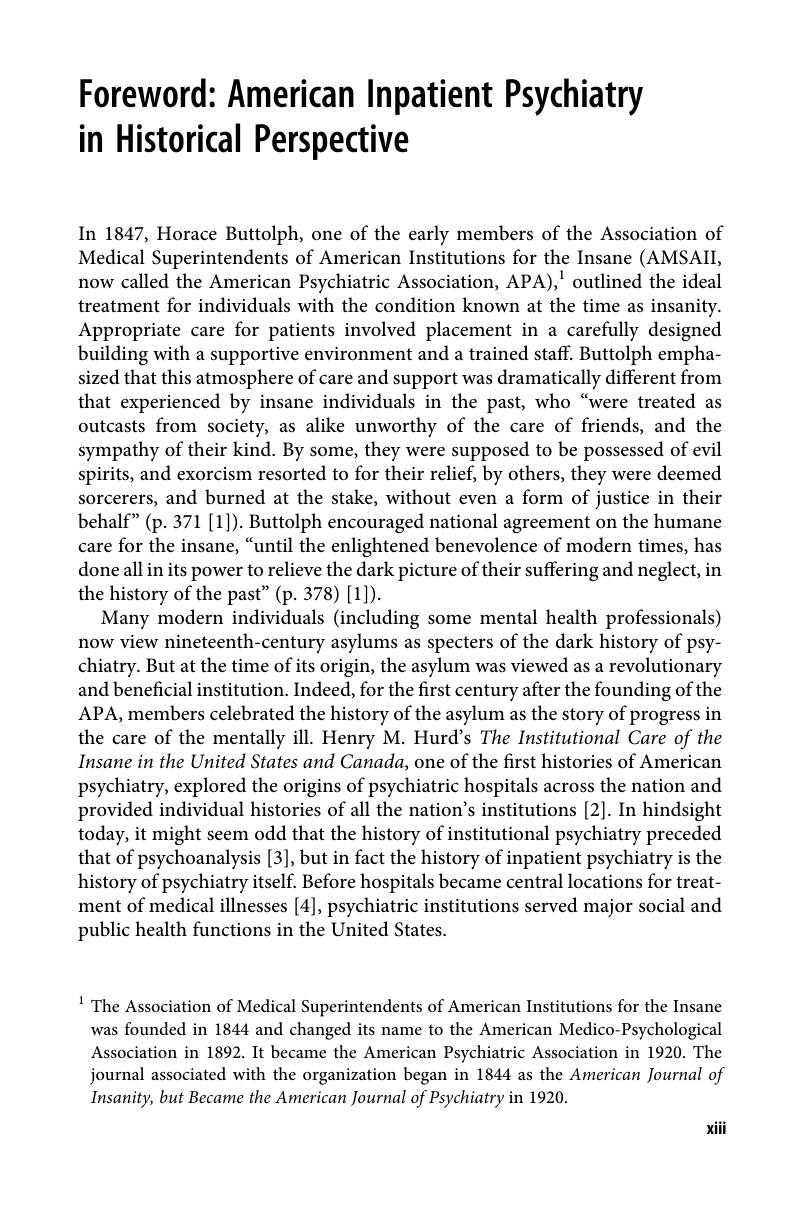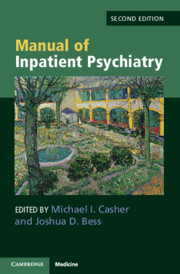Book contents
- Manual of Inpatient Psychiatry
- Manual of Inpatient Psychiatry
- Copyright page
- Contents
- Contributors
- Preface to the Second Edition
- Foreword: American Inpatient Psychiatry in Historical Perspective
- Chapter 1 The Inpatient with Schizophrenia
- Chapter 2 The Inpatient with Depression
- Chapter 3 The Inpatient with Mania
- Chapter 4 The Inpatient with Borderline Personality Disorder
- Chapter 5 The Inpatient with Dementia
- Chapter 6 The Inpatient with Traumatic Brain Injury
- Chapter 7 The Inpatient with Dual Diagnosis (Co-Occurring Disorder)
- Chapter 8 The Young Adult on the Inpatient Unit
- Chapter 9 Clinical Documentation on the Inpatient Unit
- Index
- References
Foreword: American Inpatient Psychiatry in Historical Perspective
Published online by Cambridge University Press: 05 March 2020
- Manual of Inpatient Psychiatry
- Manual of Inpatient Psychiatry
- Copyright page
- Contents
- Contributors
- Preface to the Second Edition
- Foreword: American Inpatient Psychiatry in Historical Perspective
- Chapter 1 The Inpatient with Schizophrenia
- Chapter 2 The Inpatient with Depression
- Chapter 3 The Inpatient with Mania
- Chapter 4 The Inpatient with Borderline Personality Disorder
- Chapter 5 The Inpatient with Dementia
- Chapter 6 The Inpatient with Traumatic Brain Injury
- Chapter 7 The Inpatient with Dual Diagnosis (Co-Occurring Disorder)
- Chapter 8 The Young Adult on the Inpatient Unit
- Chapter 9 Clinical Documentation on the Inpatient Unit
- Index
- References
Summary

- Type
- Chapter
- Information
- Manual of Inpatient Psychiatry , pp. xiii - xxxPublisher: Cambridge University PressPrint publication year: 2020



